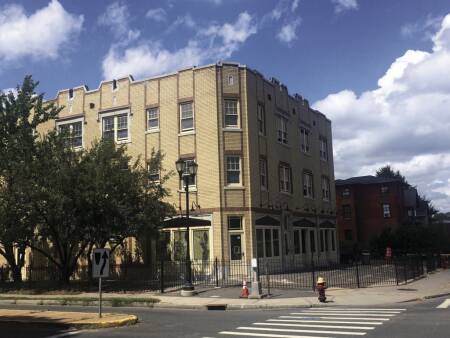The continued viability and affordability of small multifamily properties may be one of the keys to income integration in the suburbs, rural communities, and even some urban neighborhoods. Yet small apartment buildings are often overlooked or underserved by housing policy and traditional housing and commercial real estate finance mechanisms.
Because this housing type is so prevalent in New England and important in the state’s housing stock, the Connecticut Housing Finance Authority (CHFA) has created a three-pronged program to address rental needs at a scale that works for the state’s smaller communities.
The definition of small multifamily building varies by program. The buildings may have fewer than 20 apartments, or perhaps fewer than 50, at the largest. These buildings may be older properties, apartments above main-street retail or commercial space, or other small buildings. Typically, these properties are affordable without a subsidy, and most are operated by an individual owner, family, or investor. In Connecticut communities, these small buildings account for about 10 percent of all housing units.
This building type appeared on CHFA’s radar after exploratory roundtables with community development financial institutions (CDFIs) in 2010 identified a burgeoning gap in long-term financing for small multifamily properties.
“We wanted to understand where the constraints were in the marketplace. We were there to solve market failures,” says Dara Kovel, CHFA’s chief housing officer and vice president of multifamily housing at the time of the roundtables. The potential loss or deterioration of the state’s smaller properties emerged as a clear constraint that needed to be addressed.
Before the Great Recession, some traditional lenders, including smaller operators and those in the subprime market, provided higher-risk medium-term financing for small multifamily developments, but that resource substantially dried up after the crash in 2008. Historically, CDFIs provided only construction loans, but more recently they have offered permanent financing for up to seven years. The seven-year timeline was “very cumbersome for property owners who want to keep them for longer periods of time,” says Diane Smith, CDHA’s director of planning, research, and evaluation.
Serving these owners presented a challenge for CHFA. The typical owner of a smaller property was not familiar with the complex regulations that characterize the programs and requirements of housing finance agencies. Private owners in the small multifamily market may never have worked with regulatory agreements, income certifications, heightened design standards, or deed restrictions. “They don’t speak our language,” says Kovel.
CHFA decided in 2013 to set aside a $5 million pool of low-cost capital to support small multifamily buildings. CHFA established loan funds with three CDFI partners—Greater New Haven Community Loan Fund, Hartford Community Loan Fund, and Housing Development Fund—to support private investors that rehabilitate, acquire, permanently finance, or construct affordable housing, especially currently vacant or blighted multifamily properties.
Key to the loan fund program was a simple, private market–style approach. Kovel explains, “We thought, ‘How do we offer our products without acting like an HFA?’ Let’s create a mechanism to push through dollars and to act more like a private lender.”
The housing finance authority decided to rely on the CDFI’s standards and delegated the underwriting process to the finance institutions after preapproving their overall process. In this arrangement, the CDFIs originate the loans for blighted or vacant properties of three to 20 units and provide them with permanent financing for up to 20 years.
While the loan fund has a broad statewide appeal, the CHFA also sought to incorporate low-cost rental housing in a downtown revitalization strategy and as part of developments near new transit and main-street investments in the state.
The CHFA and the Connecticut Main Street Center, a nonprofit organization focused on downtown economic development, worked together to create the Come Home to Downtown program, which provides building owners in five downtown communities with technical assistance to upgrade their properties and attract new residents to small-scale, mixed-use living. CHFA provided guidance on the redevelopment process and options that would work for common building types.
The program, which is just getting off the ground, provided the owners of six properties with technical assistance in creating a viable redevelopment plan and identifying financing options. These efforts may result in about 100 new rental units in the urban centers of Meriden, Middletown, New Britain, Waterbury, and Torrington—adding crucial supply in a high-cost state while also playing a role in reviving local economies.
For the final component of the state’s small-scale rental strategy, CHFA focused on the opportunity presented by new public transit investment. Such investments have been shown to increase property values in the surrounding area, making housing affordability a challenge for many.
In 2014, the CHFA partnered with Connecticut’s Department of Economic and Community Development and the Local Initiatives Support Corporation (LISC) to create a loan fund to support transit-oriented development (TOD). The TOD loan fund provides up to $3 million for predevelopment and acquisition financing per project to support development within a half mile (0.8 km) of a transit stop, provided the development includes some affordable housing.
Connecticut’s multifaceted strategy for small-scale rental housing, which started by identifying barriers to and opportunities for forming partnerships, is not only adding units to this valuable component of the affordable housing stock, but also is revamping tired downtowns and ensuring equitable transit access.
Camille Galdes is senior associate at the ULI Terwilliger Center for Housing. Maya Brennan, vice president of the ULI Terwilliger Center for Housing, is managing editor of the How Housing Matters website, HowHousingMatters.org.





